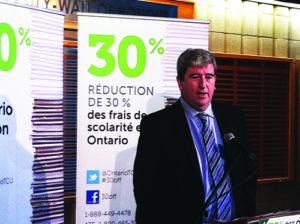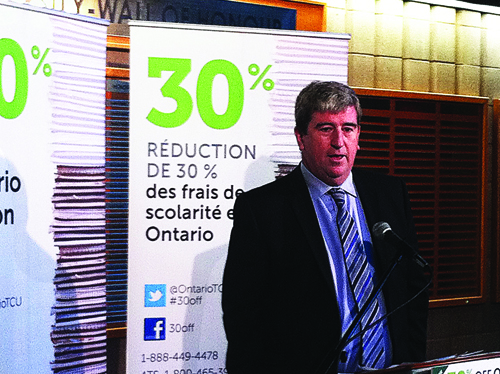Tuition fees rise to approach the provincial maximum

Melissa Sundardas
News Editor
The upcoming school year is set to take a bigger chunk out of your bank account.
Glen Murray, Minister of Training, Colleges, and Universities, announced a one-year extension of the existing tuition fees structure for Ontario universities.
University governing boards may increase tuition fees for domestic students entering arts and science, and other selected undergraduate programs, by 4.5 per cent.
For graduate students and those in high cost professional programs, tuition fees may be increased by a maximum of eight per cent, and increases in tuition fees for continuing students in any program must not exceed four per cent.
Gyula Kovacs, a spokesperson for the Ministry of Training, Colleges, and Universities, says when Ontario’s Tuition Fee Framework policy was first introduced in 2006, tuition fees were frozen for two years.
After that, increases between four and eight per cent were allowed, depending on the type of program and year. The maximum average fee increase is five per cent annually in Ontario.
To raise tuition fee levels, institutions are required to participate in the Student Access Guarantee program, which ensures that they provide additional financial assistance to students.
Ten per cent of the additional revenue from tuition fee increases must be put towards bursaries and other student assistance programs to provide financial aid to students most in need.
According to a Canadian Federation of Students-Ontario report, Students’ Analysis: The 2012 Ontario Budget and Tuition Fee Announcement, students in Ontario will collectively “pay at least $165 million more in 2012-2013 as a result of this policy.”
Alastair Woods, vp campaigns & advocacy for the York Federation of Students, says this tuition framework extension into the upcoming school year is somewhat a “slap in the face” to students from a government that promised to reduce tuition fees by 30 per cent.
The 30 per cent tuition fee grant was introduced by the Ontario government in January 2012 and annually provides a rebate of $730 for college students and $1,600 for university students who come from families with incomes under $160,000 a year. Students are only eligible for this grant if they have been out of high school for less than four years.
“[The government] instituted this very complex grant program and then quietly allowed the tuition fee framework to continue for an extra year. I think that’s very disingenuous and the impact that it’s going to have on students is obviously very negative,” says Woods.
On the other hand, Richard Smith, senior policy advisor for the Department of Assistant VP Finance and CFO, explains the importance of the tuition fee increase, saying, “Our fees go up every year, so we need to be able to pay the operating cost of the university, so we need to raise tuition.”
Even despite the tuition fee increases, Smith says York had to make a 3.25 per cent cut to their budget for the year, insisting that if the administration had
not gone ahead with the increases, the cut would have been far worse.
Woods labels the tuition rebate program as a band-aid solution to the problem of high education costs. “These increases really reflect a reluctance on the part of the government to seriously deal with the problem of tuition fees,” says Woods.
While their tuition fees don’t adhere to the same framework, international students can also expect to see a rise in the cost of their education.
International student tuition fees are expected to increase by five per cent this year.
With files from Hamid Adem


